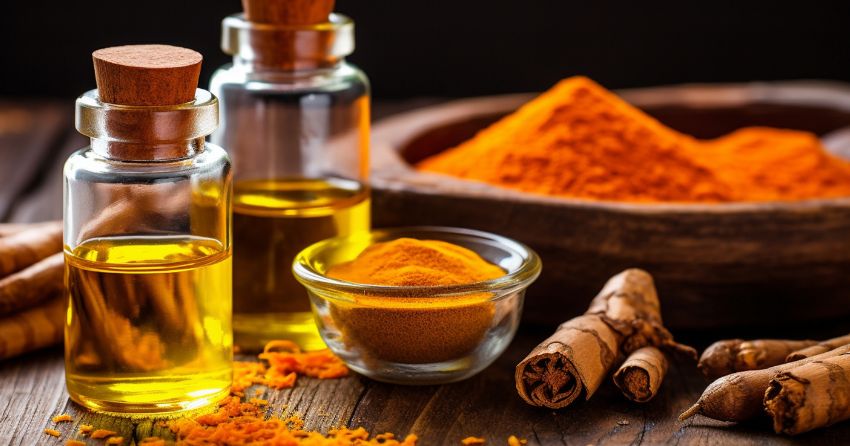Can Plant Extracts Reverse the Damage of a Bad Diet?

If your main diet has been overeating Oreos and chowing down on chimichangas for months, years, or even decades without a vegetable in sight, you may wonder if there are ways to overcome the effects of this nutrient-poor diet. Fortunately, many antioxidant-loaded plant extracts can mitigate some of the damage caused by unhealthy eating patterns—as long as you aren’t continuing to eat poorly.
Adding quercetin or berberine to your junk food diet won’t magically make you the picture of health, but plant compounds like these can help to reverse previous damage once you’ve turned a corner and started to focus on nutrition and wellness. If you want to undo some of the harm done in years past from daily drive-throughs, sugar addictions, or excessive alcohol consumption, several plant extracts have been shown to help—let’s take a look.
How Do Plant Extracts Promote Health?
There are many classes of bioactive compounds known as phytochemicals in plants, with some of the most common including:
- Polyphenols. These are the most common class of phytochemicals, with over 500 unique compounds, including resveratrol, flavonoids, ellagitannins, lignans, quercetin, and isoflavones.
- Glucosinolates/isothiocyanates. A type of phytochemical found in cruciferous vegetables like broccoli, kale, and cauliflower.
- Carotenoids: These compounds produce color in plants, like anthocyanins in blueberries or beta-carotene in carrots.
Despite their varying classifications, phytochemicals tend to provide similar or overlapping actions in the body—the most well-known being their ability to act as antioxidants and support healthier inflammatory responses. Plant compounds are known to reduce oxidative stress and the buildup of reactive oxygen species (ROS), which are often increased in people who eat diets high in sugar, refined carbohydrates, and alcohol, and low in micronutrients.
Phytochemicals also act on other essential pathways, including helping with DNA repair and fighting cellular senescence—a buildup of cells that have stopped growing and dividing but remain in the body, causing inflammatory damage to neighboring cells and tissues. Some are also known to support mitochondrial activity or boost sirtuin activity, a class of proteins that regulate DNA repair, cell survival, and metabolism.
Certain plant extracts can support liver function, which can get overworked from dealing with too many toxins (including alcohol and medications) or fat buildup (fatty liver). Some also help to normalize biomarkers like cholesterol, blood sugar, lipids, and hormones that have become dysregulated from a poor diet.
Top Plant Extracts to Overcome a Poor Diet
Berberine
If your nutrient-poor diet has led to unwanted weight gain, you’re certainly not alone—and adding berberine to your new healthy eating plan may help you shed the weight faster.
Berberine is a nitrogen-containing, plant-derived compound that provides potent antioxidant and antimicrobial activity. It also activates an enzyme called AMP-activated protein kinase (AMPK).
The effects of berberine on AMPK are one of the main reasons it helps with weight loss. AMPK acts as a sensor for low ATP levels inside cells. When low ATP levels are noticed, AMPK quickly restores intracellular energy levels. It does this by redirecting carbohydrate and fat metabolism to take glucose from the blood and pull it into cells, reducing blood sugar.
In addition to supporting healthy metabolism by activating AMPK and reducing the activity of pro-inflammatory molecules, berberine reduces adipocyte (fat cell) maturation by regulating the activity of specific genes involved in that process.
One study with overweight adults found that those who took berberine for one month had lower body weight and higher levels of brown adipose tissue. Also known as brown fat, brown adipose tissue is more metabolically active than white fat and increases energy expenditure, leading to a healthier body weight.
In a review of 12 trials, people who took berberine had significantly lower body weight, body mass index (BMI), waist circumference, and C-reactive protein concentrations—a marker of inflammation.
Sulforaphane
Sulforaphane is a powerful phytochemical known as an isothiocyanate, found abundantly in broccoli and other cruciferous vegetables like cabbage, kale, and Brussels sprouts. Sulforaphane is a strong contender for reversing the effects of a bad diet because it reduces inflammatory pathways, fights oxidative stress, and facilitates healthy detoxification.
Isothiocyanate compounds like sulforaphane stimulate a signaling pathway known as Nrf2 (nuclear factor erythroid 2-related factor 2), which activates antioxidant enzymes. Sulforaphane also reduces the activity of the pro-inflammatory protein NF-κB, which controls the production of other inflammatory signaling molecules called cytokines.
Sulforaphane supports various biomarkers of cardiometabolic health, which are commonly dysfunctional or irregular in people eating poor diets. Sulfur-based compounds like sulforaphane also protect the heart and vascular systems by releasing the gas hydrogen sulfide, a beneficial compound that fights oxidative stress and prompts the formation of new blood vessels.
Cell-based and animal research has found that sulforaphane reduces excess body fat, lowers blood lipids like total and LDL cholesterol, improves insulin sensitivity, reduces blood pressure, and promotes better blood sugar control. It also can cause white fat (the unhealthy type) to “brown,” becoming the more metabolically active form.
A bad diet can also cause fatty liver, which is a reversible stage of liver disease. Fatty liver can be caused by high consumption of sugar, refined carbohydrates, and alcohol, with a low intake of vegetables and fiber. Sulforaphane has been shown to reverse fatty liver on a cellular level, preventing fat deposition in the liver in cell-based and animal models.
Curcumin
Curcumin, one of the most well-known plant extracts, is a potent antioxidant found in turmeric. It’s known to reduce pro-inflammatory compounds, including downregulating harmful cytokines such as TNF-alpha, interleukins 1 and 12 (IL-1 and IL-12), and NF-kB. It also fights oxidative stress and may be able to reverse many metabolic markers of poor nutrition.
A meta-analysis of nine randomized controlled trials found that curcumin supplementation improved several biomarkers related to cardiometabolic and hepatic (liver) health, including reductions in:
- Total cholesterol
- LDL cholesterol
- ALT (alanine transaminase), an essential liver enzyme that is elevated with poor liver function
- Fasting blood sugar
- Insulin levels
- Waist circumference
As curcumin is notoriously low in bioavailability, look for curcumin extracts that use liposomal forms, nanoparticles, or phospholipid complexes, or add other compounds (like piperine from black pepper) that improve its absorption ability.

Anthocyanins
Anthocyanins are flavonoid compounds that provide berries (and many other fruits and vegetables) with their deep blue, purple, or red pigments and function as powerful antioxidants and anti-inflammatory agents.
Research shows greater anthocyanin intake is linked to better metabolic function and healthier body weight. One study of female twins found that those with higher anthocyanin consumption had a 3 to 9% lower fat mass and less central adiposity.
Anthocyanins have also been shown to increase healthy HDL cholesterol and reduce LDL cholesterol, blood pressure, and inflammatory cytokines. They are particularly beneficial for supporting heart health because they improve vascular function, including increasing vasodilation and reducing damage to endothelial cells.
EGCG
EGCG (epigallocatechin gallate) is the primary bioactive compound found in green tea and green tea extract. The high antioxidant content of green tea and its extracts can help to protect the body against damage from oxidative stress. It may also promote weight loss and metabolic function.
In a study of 115 obese women, those who took EGCG for 12 weeks had significant reductions in body weight, BMI, and waist circumference compared to women in the placebo group. This may be because EGCG reduces ghrelin levels—our primary hunger hormone that stimulates appetite and reduces the ability to burn fat.
Quercetin
Quercetin is the most consumed flavonoid antioxidant in the American diet, as it’s found widely in many common fruits and vegetables, like apples, onions, and berries. However, a diet low in fruits and vegetables will also be low in quercetin.
Studies show that quercetin helps to protect against the adverse effects of a high-fat diet in mice, including increasing brown fat activity, reducing adipogenesis (the production of new fat cells), and fighting inflammation.
In humans, overweight or obese women taking 100 mg of quercetin daily for 12 weeks had significantly decreased total body fat (especially in the percentage of fat in the arm) and BMI compared to the placebo group.
Key Takeaways
Nothing can take the place of a well-rounded, nutrient-rich diet—but if you want to help your body heal from the metabolic and cellular damage incurred from years of unhealthy eating, several plant compounds can facilitate the process.
While you will need to put in the work with healthy eating and exercise, plant extracts like berberine, sulforaphane, curcumin, anthocyanins, EGCG, and quercetin can help to reverse biomarkers typically made dysfunctional from a poor diet, including high body weight or excess body fat, cardiovascular health, metabolic function, and liver health.
References:
Asbaghi O, Ghanbari N, Shekari M, et al. Clin Nutr ESPEN. 2020;38:43-49.
Baralić K, Živanović J, Marić Đ, et al. Antioxidants (Basel). 2024;13(2):147. Published 2024 Jan 25.
Choi C, Song HD, Son Y, et al. Nutrients. 2020;12(10):3072. Published 2020 Oct 8.
Jalali M, Mahmoodi M, Mosallanezhad Z, Jalali R, Imanieh MH, Moosavian SP. Complement Ther Med. 2020;48:102283. doi:10.1016/j.ctim.2019.102283
Jennings A, MacGregor A, Spector T, Cassidy A. Higher dietary flavonoid intakes are associated with lower objectively measured body composition in women: evidence from discordant monozygotic twins. Am J Clin Nutr. 2017;105(3):626-634.
Kalt W, Cassidy A, Howard LR, et al. Adv Nutr. 2020;11(2):224-236.
Lee JS, Cha YJ, Lee KH, Yim JE. [published correction appears in Nutr Res Pract. 2016 Jun;10(3):364]. Nutr Res Pract. 2016;10(2):175-181.
Li J, Xie S, Teng W. Nutrients. 2021;14(1):76. Published 2021 Dec 24.
Liu Y, Fu X, Chen Z, et al. Front Pharmacol. 2021;12:665894. Published 2021 Apr 29.
Mirmiran P, Amirhamidi Z, Ejtahed HS, Bahadoran Z, Azizi F. Iran J Public Health. 2017;46(8):1007-1017.
Reis JF, Monteiro VV, de Souza Gomes R, et al. J Transl Med. 2016;14(1):315. Published 2016 Nov 15.
Wu L, Xia M, Duan Y, et al. Cell Death Dis. 2019;10(6):468. Published 2019 Jun 13.
Zhao Y, Chen B, Shen J, et al. Oxid Med Cell Longev. 2017;2017:1459497.





